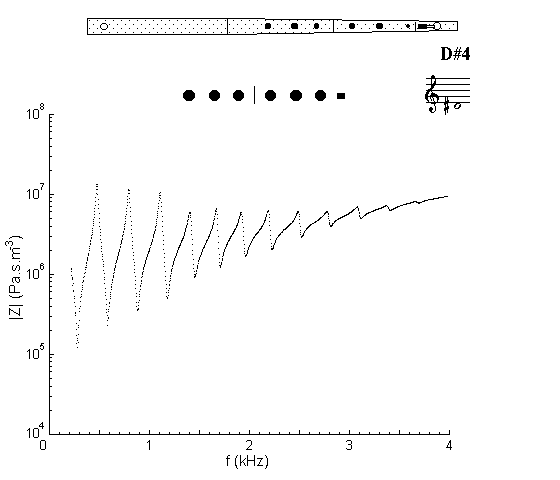| Acoustics of baroque, classical and modern flutes |
baroque flute |
D#4 and Eb4 |

|
Acoustic and Fingering Schematic Non-specialist introduction
to acoustic impedance |
This fingering serves for both D#4 and Eb4. Note that, even with just one hole open, some of the regularity of the response curve for D4 has disappeared. The fifth and some higher minima are less shallow and not harmonic. Thus the higher harmonics are weaker than for D4, and so the tone is noticeably darker.

Sound spectrum
of a baroque flute played using fingering for D#4.
![]()
![]()
![]()
![]() You can hear D#4
played by Matthew Ridley.
You can hear D#4
played by Matthew Ridley.
| Acoustic measurements are available for these flutes - modern B, modern C, classical C, classical D, classical flared, baroque Sound clips are available for modern B, classical flared and baroque |
To compare flutes, it is easiest to open a separate browser window for each instrument. |